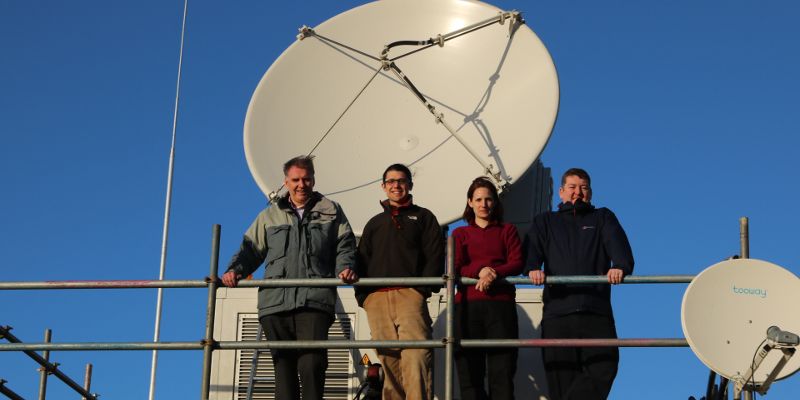
The University of Leeds is a partner in a new research project to improve our understanding of rainfall and flood predictions in Scotland.
Scientists from the University will work alongside the Scottish Environment Protection Agency (SEPA), the National Centre for Atmospheric Science (NCAS), Scottish Water and the Met Office.
The Radar Applications in Northern Scotland (RAINS) project will involve the deployment of NCAS’ Mobile X-band Radar to Kinloss, Scotland, from January to July 2016, to observe clouds and measure rainfall. The observations from the NCAS radar will be used alongside the existing Met Office radar network to study precipitation and flooding.
This will be the first in-depth study of clouds, precipitation and how they link to flooding in Scotland. The NCAS radar is capable of measuring clouds and precipitation in remote locations and is the only one of its kind in the United Kingdom.
Dr Lindsay Bennett from NCAS at the University of Leeds, who operates the radar, said: “By deploying this radar in this location, we can provide high resolution observations of the precipitation in the Inverness and the Moray Firth area. Using this data we aim to improve the understanding of rainfall and the predictions of floods in Scotland.”
Co-ordinating the effort between partners will allow the cutting-edge meteorological research and data from the radar to be translated into real improvements of flood forecasts and defences. The Met Office is a partner organisation with SEPA in the Scottish Flood Forecasting Service, which brings together meteorological and hydrological expertise in providing flood forecasting and warning services.
Michael Cranston, SEPA’s Forecasting and Warning Manager, said: “The winter of 2015/16 has already seen devastating floods across several parts of the country and Scotland has been reminded just how horrendous the effects and impacts of flooding can be for people. SEPA is committed to reducing the risk caused by floods by improving our ability to predict flooding, which is why we have funded this new research project.
“Innovation like this increases our knowledge, which leads to better forecasting, which ultimately helps our partners and those at direct risk to prepare and reduce the impacts of flooding on their lives.”
Dr Aileen McLeod MSP, Minister for Environment, Climate Change and Land Reform, said: “Recent flood events have shown the importance of flood warning in supporting informed and effective responses. This initiative will help enhance SEPA’s flood forecasting capacity and delivery of the recently published flood risk management strategies.”
In addition to the rainfall data that NCAS will provide to SEPA, scientists from NCAS and the University of Leeds will be analysing a range of other information that the radar produces. These more sophisticated observations will be used to better understand how much rainfall comes from certain types of clouds during the winter and spring.
Further information
For further information, please contact Sarah Reed, Press Officer at the University of Leeds, on 0113 343 4196 or email s.j.reed@leeds.ac.uk
Further information about the research project is available here.
Image caption: (From left-right) Jim Sharp (Met Office), Dr Ryan Neely (NCAS/University of Leeds), Dr Lindsay Bennett (NCAS/University of Leeds), Michael Cranston (SEPA) in front of the NCAS X-band Radar.
Image credit: National Centre for Atmospheric Science